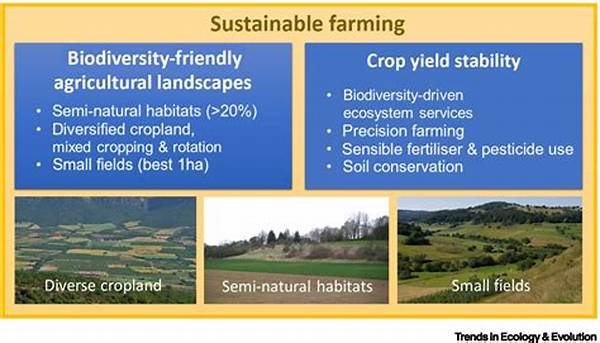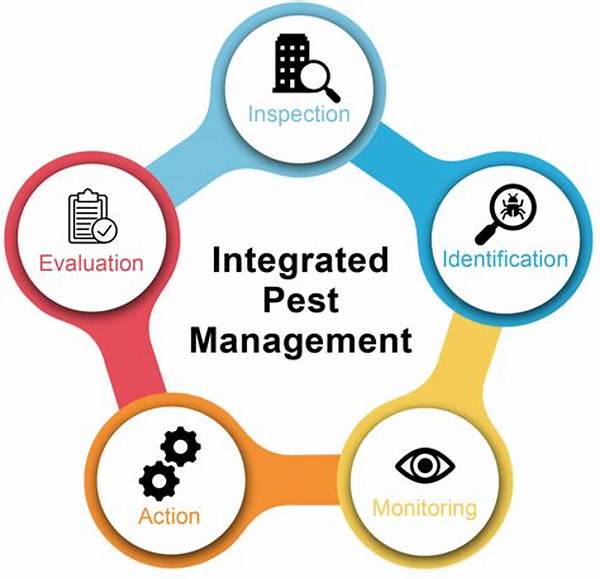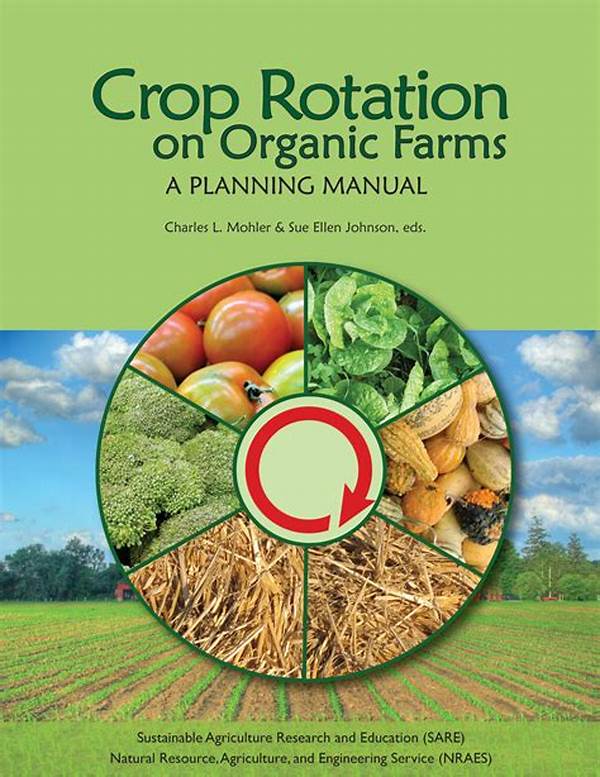The world is at a turning point where sustainable agriculture cannot merely be a trend—it must become the norm. The essential balance of our environment significantly hinges on biodiversity in farming landscapes. This concept isn’t just about the inclusion of different plant and animal species; it is the backbone of what can secure food production, sustain livelihoods, and maintain eco-system health. Embracing biodiversity is not a passive choice but a proactive stance towards a thriving future where agricultural lands teem with life and productivity. Consider the alternative: a future riddled with monocultures that strip land of its vigor and resilience. Biodiversity enables farming landscapes to flourish, bringing mutual benefits to farmers and the environment.
Read Now : Affordable Organic Farm Produce Delivery
The Importance of Biodiversity in Farming
Biodiversity in farming landscapes plays a crucial role in maintaining the ecological balance. It serves as the foundation for functions such as pollination, soil fertility, and pest control. Without it, our food systems become precariously vulnerable to pests and disease, risking widespread failures. Sustainable farming practices that incorporate biodiversity create systems resilient enough to withstand environmental stressors, including climate change. Moreover, biodiversity contributes not just to ecological stability, but to economic resilience as well, offering diverse income sources for farmers who otherwise might rely on a single crop. The choice is clear: integrating biodiversity into farming landscapes can be the difference between thriving ecosystems and barren fields.
Implementing biodiversity in farming landscapes is an investment in the future. The upsurge in biodiversity leads to a harmonious environment where varying species complement each other, boosting productivity. This system minimizes the need for synthetic fertilizers and pesticides, reducing costs and environmental impact. Moreover, diverse plant species improve soil structure and health, ensuring the fertile grounds essential for sustained agricultural output. Biodiversity acts as nature’s shield, reducing vulnerability against pest invasions and crop failures. In turn, this manifests as a more predictable yield, providing both security and quality of life for farming communities, thereby carving a path toward sustainable development.
Methods to Enhance Biodiversity
1. Crop Rotation: Alternating crops disrupts pest cycles and enriches soil, solidifying the role of biodiversity in farming landscapes.
2. Agroforestry: Incorporating trees into farming supports biodiversity and offers shade, shelter, and nutrition, benefiting both crops and local fauna.
3. Polyculture: Diverse plant cultivation within the same space outcompetes weeds and reduces disease spread, a testament to the power of biodiversity in farming landscapes.
4. Hedgerows and Buffer Strips: These plant barriers protect waterways and provide habitat corridors, underscoring the importance of biodiversity in farming landscapes.
5. Cover Crops: They replenish nutrients and prevent erosion, showing that even simple measures can boost biodiversity in farming landscapes.
Economic Benefits of Biodiversity
The integration of biodiversity in farming landscapes isn’t just an ecological imperative—it’s economically savvy. By fostering diversity, farmers can unlock multiple income streams, lessening the reliance on a single commodity market. This diversification results in a buffer against market fluctuations and environmental challenges, providing greater financial stability. Moreover, the natural pest control and reduced need for chemical inputs decrease costs and elevate the quality of agricultural products, commanding premium prices. In essence, biodiversity builds an agrarian economy that’s both robust and profitable.
Even from a broader perspective, biodiversity in farming landscapes fuels economies through ecosystem services such as water purification and carbon sequestration. These services contribute to farming operations by enhancing productivity while safeguarding environmental health. Furthermore, with increasing consumer awareness and demand for sustainable products, farmers who embrace biodiversity can tap into new markets willing to pay for eco-friendly practices. It is evident that investing in biodiversity is investing in a prosperous and secure future, not only for individual farmers but for global agricultural markets as well.
Read Now : Non-toxic Pest Control Methods
Challenges to Implementing Biodiversity
Despite its clear benefits, integrating biodiversity into farming landscapes presents challenges. Many farmers face financial constraints and need immediate returns, making the investment in diversity seem risky. There’s also limited access to knowledge and resources required to effectively implement biodiversity-friendly practices. Moreover, policy frameworks often lag in providing incentives or support for biodiversity initiatives. Yet, overcoming these hurdles is crucial, as the long-term advantages dramatically outweigh the short-term challenges.
Public awareness and education play pivotal roles in surmounting these challenges. Farmers must be equipped with the knowledge to implement biodiversity strategies effectively. Additionally, governments and institutions must step up, providing subsidies or financial incentives that make these sustainable practices accessible. When the supports are in place, biodiversity in farming landscapes can become a reality for many more farmers, quashing myths that it is an ideal reserved for elite or large-scale operations. This shift is attainable with targeted action and commitment from all stakeholders in the agricultural sector.
Policy Support for Biodiversity
Policies are powerful tools that can transition farming into more biodiversity-friendly endeavors. Government initiatives can support biodiversity in farming landscapes by providing financial incentives, education, and resources. Legislations must evolve to prioritize sustainable farming, rewarding those who embrace biodiversity through grants and subsidies. By establishing regulations that protect and promote biodiversity, governments can encourage more farmers to adopt eco-friendly practices that ultimately benefit everyone.
Achieving Sustainable Development
The pursuit of sustainable development cannot ignore the critical role of biodiversity in farming landscapes. It is the key to achieving a balance between economic growth, social inclusion, and environmental protection. Biodiversity fortifies farming systems, making them vital in addressing food security for a growing population under the looming threat of climate change. It paves the way for resource-efficient agriculture that requires fewer inputs and yields higher returns—both economically and environmentally.
In light of these facets, prioritizing biodiversity in farming landscapes becomes an obvious choice. No longer can we afford to exhaust resources and degrade environments in the name of agricultural progress. It is time for a transformative approach that harmonizes human activity with nature’s cycles. Through the lens of sustainability, the integration of biodiversity presents itself not only as an ecological necessity but as a moral imperative, a way to restore and conserve our planet for future generations.
Stakeholder Involvement in Biodiversity
Achieving a vibrant biodiversity in farming landscapes demands collaboration among diverse stakeholders, including farmers, scientists, policymakers, and consumers. Everyone plays a critical role in reinforcing this ecological tapestry. Farmers are at the forefront, implementing practical strategies to boost biodiversity. Scientists contribute by researching effective practices, offering evidence-based recommendations that enhance agricultural outcomes. Policymakers craft the economic and regulatory frameworks that support biodiversity initiatives, making them attractive and viable for all farmers.
Consumers also wield significant power, driving demand for sustainably produced goods and holding producers accountable to ethical standards. By supporting biodiversity-friendly farming, they become essential partners in this movement. Together, these stakeholders create an environment where biodiversity in farming landscapes can thrive not just as an ideal but as a practical reality. This collaborative effort strengthens food systems, makes communities more resilient, and contributes meaningfully to global environmental goals.



